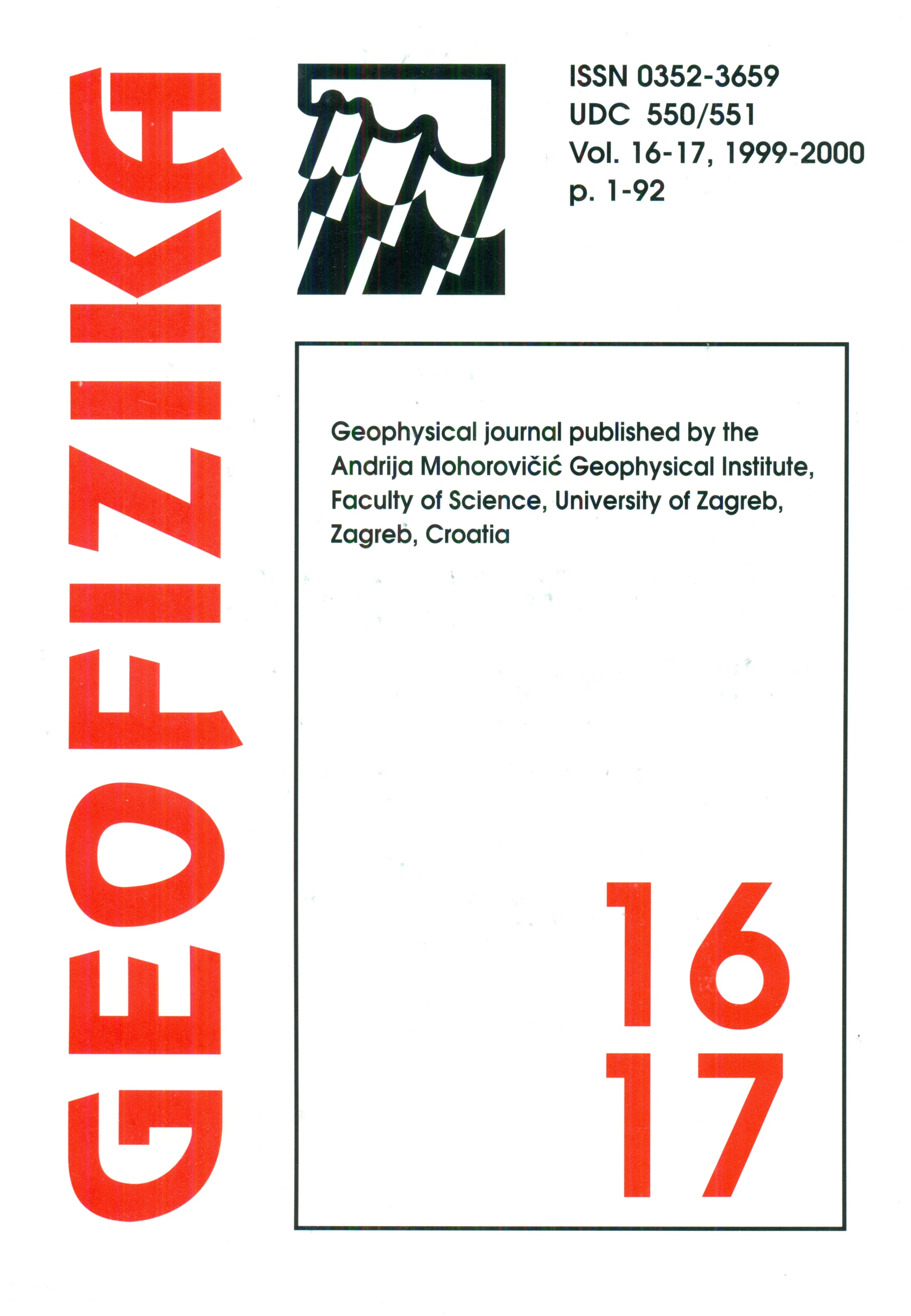Strong ground motion simulation using shear dislocation sources
Keywords:
Strong ground motion, simulation, finite difference methodAbstract
Paper presents the generation and implementation of various types of earthquake sources in a 2D finite difference grid. The procedure used for computing dislocations on the fault plane is identical to both well known kinematic and dynamic models, since it was calculated by solving the equation of motion taking into account the stress drop and the shear strength of the fault. This scheme is superior over the kinematic model because it calculates dislocation using stress drop instead of taking a priori dislocation pattern without any physical reasoning. Unlike the dynamic model, it does not require driving and resisting forces. The parsimonious staggered grid method was adopted instead of the conventional staggered grid since it requires less computational memory and enjoys the same advantage of being stable for larger Poisson's ration, and free from spatial derivative of elastic parameters. Further, this scheme is flexible and allows a simple way of incorporating stress-free boundary condition. The algorithms were written for the simulation of P-SV and SH-waves propagation. The computed radiation patterns of the various earthquake sources for P-SV and SH-waves are in good agreement with the analytical radiation patterns. The effects of soil thickness and the velocity within it were studied in detail since they play an important role in the amplitude amplification, changes in signal duration, frequency content and mode conversion. Results depict that for the steeply incident waves, the impedance decrease and resonance effects control the amplitude amplification. The mode conversion at interfaces and multiple reflections in the surficial layer increase the signal duration.
Downloads
Published
Issue
Section
License
Copyright (c) 2021 Geofizika journal

This work is licensed under a Creative Commons Attribution-NonCommercial 4.0 International License.

